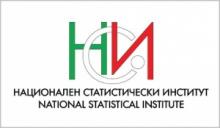From today, 11.10.2010, on the internet website, NSI opens new subsections "Monthly working day adjusted data" and "Monthly seasonally adjusted data" under "Short-term business statistics". For the first time the working day and seasonally adjusted monthly data are published for industrial production, production in construction and turnover in retail trade for the period 2000 - 2010.
Economic phenomena follow long-term trend in its development, but are influenced by the impact of seasonal, cyclical, calendar and random factors (natural disasters, price shocks).
Working day adjustment is an adjustment for variations caused by calendar effects, different number of calendar and working days in the months, national holydays and outliers (for example the presence of more non-working days in May could contribute to the decline in the production in some activities).
Seasonal factors are related to climatic conditions and they refer to the variation in the time series that occurs within one year in the research on the values of economic indicators.
Seasonal adjustment is a statistical method, which eliminates the seasonal component of time series of industrial production, production in construction and retail trade and it is particularly suitable for long-term comparisons and analysis of the data.
Elimination of calendar and seasonal effects of monthly data allows to establish the trend in the development of various economic sectors and to calculate monthly and annually percentage changes.
Calendar and seasonal adjustment of statistical indicators in the NIS is conducted under a harmonized European methodology described in the "ESS Guide for seasonal adjustment”. The procedure is carried out using the software developed by Eurostat Demetra, where the algorithm TRAMO / SEATS is applied.



